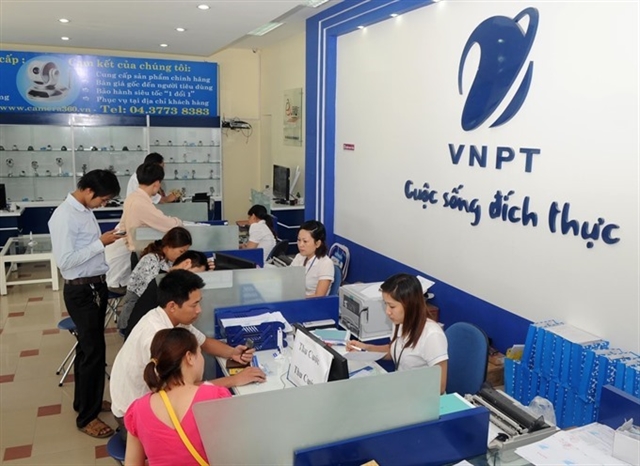With a sharp drop in revenue from traditional telecommunications services, carriers are rapidly transforming their digital strategy.

With a sharp drop in revenue from traditional telecommunications services, carriers are rapidly transforming their digital strategy.
The Ministry of Information and Communications reported that telecommunications service revenue increased only about 0.3 per cent last year compared to the same period of 2019.
In which, Viettel hit a total revenue of more than VND263 trillion (US$11.4 billion), a year-on-year increase of 4.1 per cent, profit before tax reached more than VND42 trillion.
VNPT recorded a total revenue of more than VND162.7 trillion, fulfilling 95 per cent of its plan, profit was VND7.1 trillion.
Meanwhile, MobiFone revenue is estimated at nearly VND30.5 trillion.
Last year continued to witness the decline of voice and SMS in the structure of telecommunications revenue.
According to the Viet Nam Telecommunications Authority, Ministry of Information and Communications, mobile service revenue is still mainly based on traditional types of services, especially voice and SMS, which account for more than 54 per cent. Meanwhile, these services are saturated.
Viet Nam's traditional telecommunication service revenue reduction trend is even faster than the world.
This is the result of a series of factors such as saturated mobile subscribers, continuously decreasing rates to compete among carriers, the popularity of calling and texting services on OTT.
Notably, the telecom market has seen a drop in data prices since 2018, causing data traffic to double or triple, but data revenue of carriers has only increased from 10-20 per cent.
This trend has forced operators such as Viettel and MobiFone to shift to provide digital infrastructure and services such as digital services, fiber optic infrastructure, digital payment, and cloud services in recent years.
VNPT has deployed a wide range of products for government customers and state agencies such as the national public service portal and solutions, products for education, healthcare, smart cities, and smart travel.
Do Minh Phuong, deputy general director of Viettel Group, explained that the group still reached the target and slight growth last year was due to its stable operation of the foreign telecommunications markets and the favourable exchange rate.
Traditional services decreased by 7-10 per cent, especially SMS with a sharp decline, value-added services were stable and data services increased by about 20 per cent.
Especially for subscribers, revenue of fixed and mobile broadband had grown strongly, he said.
Traditional telecommunications services would continue to decline.This was the general trend of the world, said Phuong.
Pham Duc Long, Chairman and General Director of VNPT Group, said that VNPT's data revenue increased by 18.9 per cent last year.
Its proportion of data revenue in total mobile revenue increased from 28.3 per cent in 2019 to 35.2 per cent last year. Especially, broadband revenue grew by 5.5 per cent, subscribers increased by 39 per cent.
Telecom companies have expanded their service portfolio to capitalise on growth opportunities in technology, media and telecommunications (TMT) across sectors such as cloud, television (TV) and IoT (Internet of Things) in recent years.
Meanwhile, the rapid spread of smartphones is driving growth in areas such as mobile advertising and new service packages including fixed, mobile and TV services.
Experts said that telecom companies in Viet Nam were having opportunities to strongly transform their strategy to TMT, especially when universalising 4G and 5G mobile network services and smartphones was one of the goals of the National Digital Transformation Programme by 2025.
The number of subscribers using data is about 70 million currently and the growth rate has been steadily increasing in recent years.
Most recently, the deployment of 5G telecommunications technology is preparing to be commercialised with an investment of up to $2.5 billion in the 2020-2025 period.
The Ministry of Information and Communications has also promoted the programme of converting 2G/3G devices to 4G/5G smartphones, and manufacturing cheap 4G and 5G devices. — VNS





